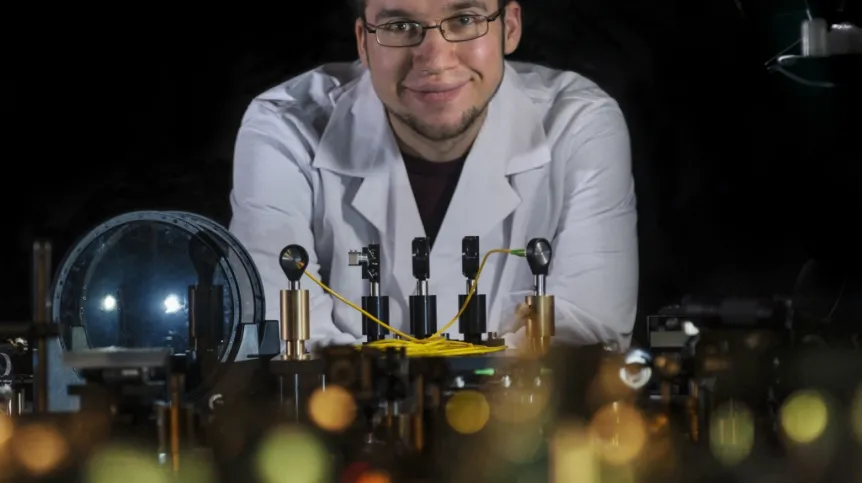
Warsaw optical scientists experts have generated ultra-short pulses of high-energy in optical fiber, using the method, which was considered impossible to perform. The solution proved to be not only useful, but also surprisingly simple!
Researchers at the Warsaw Laser Centre of the Institute of Physical Chemistry PAS and the Faculty of Physics, University of Warsaw developed an innovative variety of fiber laser. Using ingenious and easy-to-implement solution, Warsaw researchers "forced" one of the varieties of fiber optics to generate ultrashort pulses of high energy. Especially interesting is the fact that experts had considered the method they used impossible to achieve! The new laser has no mechanically sensitive external parts, which makes it an attractive solution for the industry. The patent-pending invention should soon shorten the processing of materials by laser machining. Representatives of the institute reported on the research project in the release sent to PAP.
"Fiber lasers can be built so that all the processes important for the generation and shaping of the ultrashort pulses take place in the fiber itself. Such devices, without any external mechanically sensitive components, operate in a very stable manner and are ideal for working in difficult conditions" - said Dr. Yuriy Stepanenko from the Institute of Physical Chemistry PAS.
Laser action in the fiber leads to the generation of a continuous light beam. The release of energy in the shortest possible pulses is, however, much more favourable, since it signifies a large power increase.
Pulses are generated in fiber lasers by a system called saturable absorber. When the light intensity is low, the absorber blocks light, when it is high - it lets light through. Since in femtosecond pulses (pulses lasting millionths of a billionth of a second) the light intensity is much greater than in a continuous beam, the absorber parameters can be adjusted so that it only lets pulses through.
"Graphene sheets, in a form of a thin layer deposited on the tip of the fiber, have been used as one of the options for saturable absorbers. But the diameters of optical fibers are in the order of single microns. Even a little energy cramped in such a small cross-section has a significant density per area unit, affecting the durability of materials. Therefore, when an attempt was made to increase the power of the femtosecond pulses, the graphene on the tip of the connector was destroyed. Other absorbers, such as carbon nanotubes, may also suffer degradation" - explained Jan Szczepanek, a PhD student from the Faculty of Physics of the University of Warsaw, and the first author of the publication in the journal "Optics Letters" (https://doi.org/10.1364/OL.42.000575).
In order to generate higher energy femtosecond pulses in the optical fiber, the Warsaw physicists decided to improve saturable absorbers of a different type, functioning not due to the unique properties of materials, but due to the clever use of optical phenomena, such as nonlinear effects causing a change in the refractive index of glass.
The new laser produces high quality and high energy femtosecond pulses; their energy can be up to 1000 times higher than in lasers with material-based absorbers. In comparison to the devices with absorbers based on polarization rotation, the laser made by Warsaw physicists has a much simpler construction and therefore significantly greater reliability.
PAP - Science and Scholarship in Poland
lt/ mrt/
tr. RL













